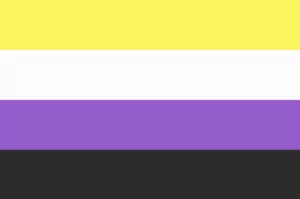Financial literacy is a hotly debated topic.
How do you educate consumers to make smarter investment decisions?
Sometimes, the best approach is to learn by doing.
That’s why Phillip Barrar, CEO of Moka, is fostering financial literacy not through courses, but through action and participation. He joined the show to discuss how Moka’s products promote financial inclusion in a simple and intuitive way.
He discusses:
- Moka’s products and how they work
- Why the rise of Fintech is good for the consumer
- Why financial literacy comes from action and participation
Finding money in your pocket
Have you ever done some seasonal activity like, say, skiing and put on a coat you haven’t worn in a year, reached inside the pocket, and found some cash you forgot about?
That’s an awesome feeling, right?
Well, Moka’s philosophy is that investing should be just as easy and give you the same satisfaction you get when you find ski-coat money.
“We wanted to be able to build a product that makes you feel like you’re discovering more money in everyday life.” — Phillip Barrar
The company has two products that help you do just that.
- Moka Advantage
This is their core product. It links directly to your debit and credit cards and every time you make a purchase, the amount is rounded up to the nearest dollar. The product then takes that spare change and invests it into a fully managed investment account.
This takes the burden off of the consumer — no change in behaviour is needed. And they charge a flat fee so customers don’t need to worry about hidden costs.
- Moka 360
Inspired by the pandemic, this product helps you go beyond investing and promotes other behaviours in everyday life that best equip you to manage your money.
This includes on-demand financial coaching and a debt management tool consumers can use to learn how much house they can afford and even create a payment plan to automate payments and save money on interest.
With Fintech, the consumer wins
Moka are changing the experience of investing from a chore to the joy of finding money in everyday life.
This accessibility has enormous potential for financial inclusion because it removes the barriers to entry holding many consumers back from smart investment decisions.
It’s one of the many ways Fintech is helping consumers traditionally excluded from advanced financial services to finally participate.
“Fintech adoption rates globally are on the rise. That’s positive and healthy, because as the markets evolve and deepen, it’s a rising tide that lifts all boats.” — Phillip Barrar
In Canada and Europe — two similar markets in which Moka have launched — there are large, underbanked populations who could greatly benefit from these services who often feel like they don’t have enough money to make smart investments.
Often, they simply don’t know how to get started.
But across the board, Fintech is changing this reluctancy.
By delivering simple ways to onboard consumers to complex tools like automated payments and investments, Fintech is creating a more inclusive financial landscape.
How to teach financial literacy
Often, when the topic of financial inclusion comes up, the conversation centers on how to promote financial literacy in traditionally underserved populations.
More often than not, financial literacy is seen as something to be taught in an academic sense — which is a daunting proposition for many financial institutions. Unfortunately, the segment of the population that stands to benefit most from financial literacy education are the consumers who would have the most trouble taking time to learn from a textbook or in an academic setting.
So, how do you overcome this?
By shifting the approach to pedagogy from a cerebral and academic one to a more visceral, hands-on approach.
You can think of it as a financial literacy apprenticeship.
“I believe in financial literacy through action and participation.” — Phillip Barrar
Wealthtech, like the tools offered by Moka, allows consumers to learn by doing.
The time commitment is reduced, the ease-of-access and automated systems create a gradual learning curve, and the ability to monitor your financial status just by whipping out your smartphone means you can always be learning how finance really works.
Sure, there is a ton of great content out there that anyone can seek out to improve their financial literacy, but it’s often disconnected from their financial lives.
Fintech allows you to learn without having to wait for graduation before you reap the benefits of smarter financial habits.
Put simply: Fintech is humanizing finance and empowering consumers.
To ensure that you never miss an episode of Payments Innovation, subscribe on Apple Podcasts, Spotify, or here and don’t forget to check out our YouTube!
Until next time!
Listening on a desktop & can’t see the links? Just search for Payments Innovation in your favorite podcast player.
———————————————————————————————————-

